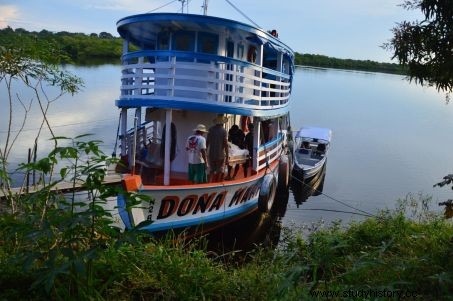New remains unearthed in the Amazon bear witness to Brazil's rich archaeological past.

Funerary urns dated to 1500, recently discovered in Tauary, Amazonia.
While Brazil is still bruised by the loss of the immense heritage that disappeared in the fire at the National Museum of Rio de Janeiro, on the night of September 2 to 3, 2018, news brought from the depths of the Amazon came to put a little balm to the heart... A team of anthropologists from the Mamiraua Institute (Instituto de Desenvolvimento Sustentavel Mamiraua) , a research center, has just unearthed a remarkable set of ceramic funerary urns dating from 1500. "Since 2003, the year when I began to take an interest in these first time such remains have been encountered" , explains Anne Rapp Py-Daniel, archaeologist at the Federal University of West Para , joined by "Sciences et Avenir".
Funded by the American Gordon &Betty Moore Foundation and the Ministry of Science, Technology and Innovation of Brazil, the expedition coordinated by Eduardo Kazuo Tamanaha and Marjorie Lima explored the banks of the Rio Téfé, in the State of Amazonas, in search of this Native American heritage. The specialists had indeed been alerted by members of the local community of Tauary, a hamlet located five hours by boat from Téfé, an agglomeration of 60,000 inhabitants. "These villagers asked us to come and study these urns, after one of them was accidentally unveiled" , adds the researcher. The archaeologists of the Mamiraua Institute thus traveled by boat up the course of the river from the town of Téfé, until they reached the Tauary sector, in the middle of a protected forest area.
 The boat, the only means of access to the Tauary site. ©Collection of the Instituto Mamiraua Laboratory
The boat, the only means of access to the Tauary site. ©Collection of the Instituto Mamiraua Laboratory
There, they were able to unearth an extremely rare series of nine jars with red and black polychrome decorations, stored for more than 500 years under a thin layer of sediment. "The urns were arranged in a singular way. When one of them was represented face up, the next was turned towards the ground, as if the faces of the dead should not be found vis- opposite" , explains Eduardo Kazuo Tamanaha, the head of the excavations, in a press release. "Although Brazilian archeology has made great progress in recent decades, we are still very far from understanding how the Amazon was populated, this immense region of more than 7 million km 2 …. Also, any discovery of material in context - that is to say in undisturbed environments - opens unique doors to this past" , summarizes Anne Rapp Py-Daniel.
Researchers were able to establish that these achievements belonged to the so-called "Tefé" culture. A tradition linked to other populations living thousands of kilometers away, in the states of Rondônia, Rio Negro, Rio Madeira or Rio Solimoes. "We know that productions of urns similar to those at the Tauary site were made more than 1000 years ago, and that they continued to be manufactured even in the 16 th century. It was populations close to this group who came into contact with Francisco de Orellana and Gaspar de Carvajal in the 16th century. century, the first Europeans to have reached the Amazon basin and revealed the existence of its mighty river, in 1542 “says Anne Rapp Py-Daniel.
 Red and black polychrome decorations of so-called Tefe culture urns. ©Collection of the Instituto Mamiraua Laboratory
Red and black polychrome decorations of so-called Tefe culture urns. ©Collection of the Instituto Mamiraua Laboratory
Sixty centimeters high, adorned with effigies of human heads wearing earrings and "tiaras" - presumably crowns of feathers - these urns also featured animal figures (snakes, king vultures, owls) and geometric patterns . They were used for "secondary burials", in other words for the reburial of bones recovered once the natural decomposition of the bodies had been completed. "The recent destruction of the National Museum of Rio de Janeiro has placed Brazil in the face of a deep crisis. Discovering and making known a little of this past linked to the Amazonian world is fundamental in this context", added Anne Rapp Py-Daniel. "We cannot ignore that before the arrival of the Europeans, the Amazon had already been occupied for more than 12,000 years…. and that a large number of descendants* of these peoples are still alive !".
* Decades of archives and research on indigenous societies in Brazil have gone up in smoke in the fire at the National Museum of Rio. Among them, the recordings compiled since 1958 from the collection of indigenous languages, with songs in languages for which there is no longer any living speaker... An irremediable loss for the heritage of this country and the memory of the world.
